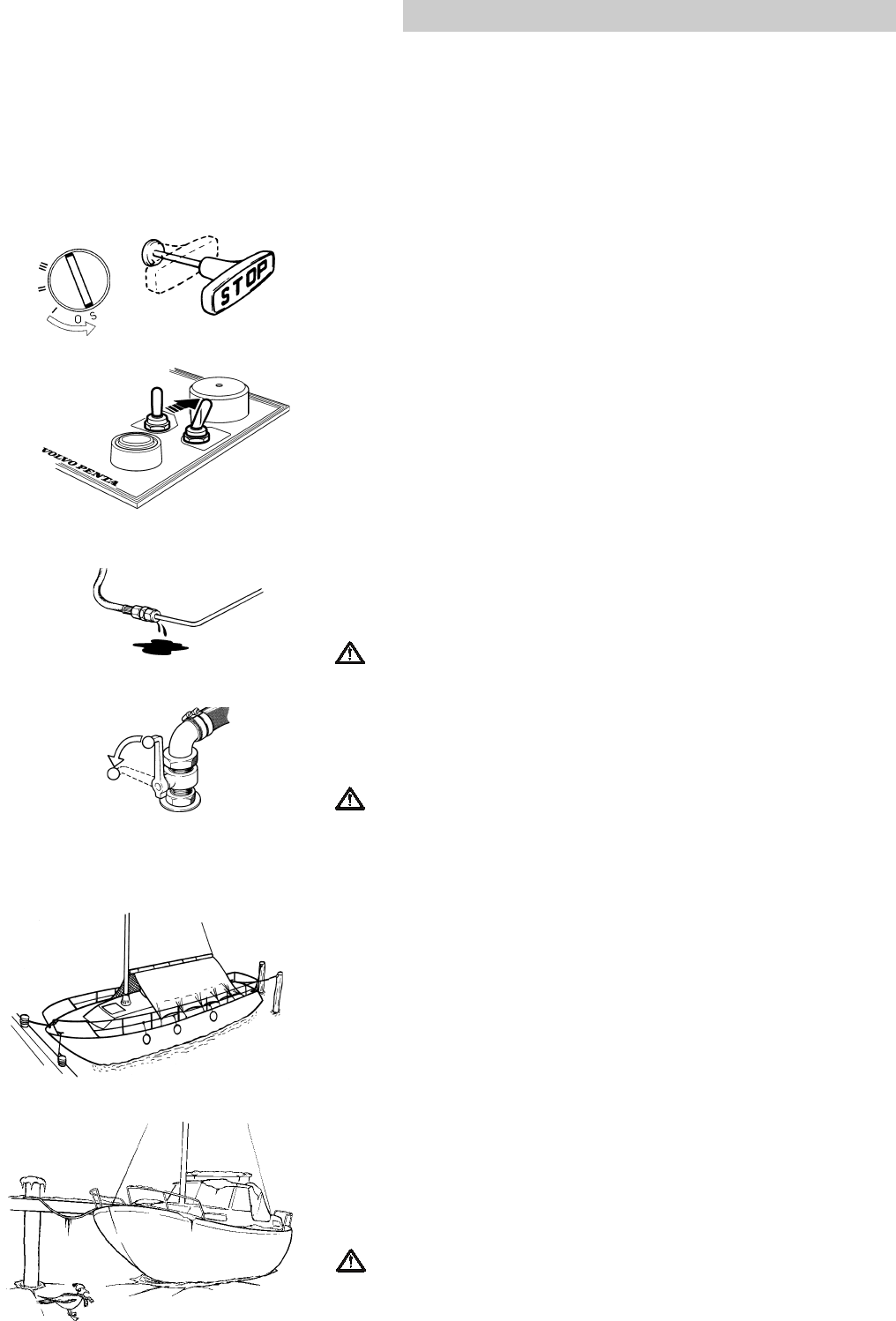
26
Stopping the engine
The engine should be run for a few minutes at idle (in neutral) before turning it off. This will avoid boiling and even
out the temperature. This is especially important if the engine has been operated at high engine speeds and
loads.
Stopping
If the boat is fitted with a stop control: Pull and hold out the stop
control until the engine has stopped. Push in the stop control. If the
instrument panel has an ignition switch the key should turned to the stop
position ”S”. The key will automatically spring back to the ”0” position
when it is released and can then be removed.
If the boat is fitted with an electric start/stop function: Push the rock-
er switch to the ”Stop” position until the engine stops. Release the rocker
switch and it returns automatically to the ”Power OFF” position.
After stopping the engine
● Inspect the engine and engine compartment for any leaks.
● Close the fuel cock and sea cock for the cooling water intake.
IMPORTANT! Do not forget to open the cocks before the engine is
started again.
● Read off the hours counter and do preventive maintenance as in the
maintenance schedule.
● Switch off the main switch if the boat is not to be used for some time.
IMPORTANT! Never break the circuit with the main switches while
the engine is running. This could damage the generator.
Cold weather precautions
To prevent freezing damage, the seawater system must be drained and
the freshwater system coolant must have sufficient antifreeze protec-
tion. See chapter Maintenance ”Cooling systems”.
IMPORTANT! A poorly charged battery may burst as a result of
freezing.
Laying up
If the boat is not going to be used for some time but is being left in the
water, the engine must be run to operating temperature at least once
every 14 days. This prevents corrosion in the engine. If the boat will not
be used for more than two months then inhibiting should be carried out:
See chapter “Laying up/Launching”.
7742957 - Downloaded from www.volvopenta.com 22/09/2008 11:33:23


















